Introduction

Before the release of the Voigtländer VM 50mm 1.0 Nokton in 2022, this Voigtländer VM 21mm 1.4 Nokton was Cosina’s most expensive M-mount lens and also one of their most complex ones – thanks to 13 elements in 11 groups, 4 aspherical surfaces and a floating elements design. Unfortunately this also made it one of their heaviest and most expensive lenses and I have the feeling it didn’t quite get the momentum Cosina expected for their flagship lens, hence in many parts of the world the price has been reduced several times since release – reason enough to have a closer look at this intriguing lens now.
Lens is being reviewed on Sony A7rII and Leica M10
Sample Images







You can find most of the shots in this review in full resolution here.
Contents
Specifications/Version History
Cosina has made two fast 21mm lenses for M-mount so far and currently they also have a slower 21mm 3.5 in their line up:

- Voigtländer VM 21mm 3.5 Color-Skopar
182g, 1 aspherical surface, unit focus design, 39 mm filter thread, 10 aperture blades, removable hood, released 2018 - Voigtlander VM 21mm 1.8 Ultron
412g, 1 aspherical surface, unit focus design, 58 mm filter thread, 10 aperture blades, non removable hood, released 2012, discontinued early 2023 - Voigtländer VM 21mm 1.4 Nokton
480g, 4 aspherical surfaces, floating elements design, 62 mm filter thread, 12 aperture blades, removable hood, released 2020
This is a review of the f/1.4 version and its full specifications are:
- Diameter: 69.5 mm
- Field of view: 90.3° (diagonally)
- Length: 69.7 mm
- Weight: 484g (without caps and hood)
- Filter Diameter: 62 mm
- Number of Aperture Blades: 12 (straight)
- Elements/Groups: 13/11

- Close Focusing Distance: 0.5 m
- Maximum Magnification: ~1:18.3 (measured)
- Mount: M-mount
The Voigtländer 21mm 1.4 Nokton is also available for E-mount, you can find its review here.
buy from B&H | amazon.com | amazon.de | ebay.com | ebay.de for $899 (affiliate links)
Handling/Build Quality

I have said it in the past, there is no clear line when it comes to the casing design of Cosina’s VM lenses. This one I would describe as the “classic VM design” also found on e.g. the Voigtländer VM 15mm 4.5 II/III, VM 35mm 1.2 III, VM 35mm 2.0 Apo-Lanthar, VM 40mm 1.4, VM 50mm 1.2 and plenty more, this means: everything feels like it is made from metal and all the red/white markings are engraved and filled with paint.
Luckily there is no shiny front ring to be found here, as that could lead to some reflection issues on previous lenses.
The hill/valley focus ring has perfectly even resistance and travels roughly 120° from the minimum focus distance of 0.5 m to infinity, thanks to the long focus throw setting precise focus is not an issue with this lens, even at longer focus distances.
The lens is rangefinder coupled between 0.7 m and infinity. Unlike some Laowa and the latest Leica lenses there is no click-stop for leaving this coupled range though. However: when going from the minimum focus distance to 0.7 m you can feel the roller engaging again.
The aperture ring has half-stop click stops and travels ~110° from f/1.4 to f/16. Interestingly they are not spaced equidistantly here, as the distance between f/1.4 and f/2.0 is bigger than that between f/11 and f/16.
It shouldn’t come as a surprise that the rangefinder blockage is significant with this lens. With the hood attached and the lens set to its minimum focus distance even a part of the rangefinder patch is obstructed. Not ideal if you rely on the rangefinder to focus.

Talking about the hood: traditionally the hoods for the Voigtländer M-mount lenses have to be bought separately – whereas they are included with the E-mount lenses; something I never really understood.
Either way, with this 21mm f/1.4 lens the hood is included and it has one of the most unique/odd designs I came across so far. It has also a feature we already know from the Laowa 28mm 1.2: a filter can be attached under the hood and contrary to the Laowa lens here even a slim polarizer fits.
Naturally the Voigtländer lenses do really good in the flare resistance department, so we will check if this hood is actually necessary, as it makes the lens even bulkier.

You can adapt the M-mount version to a variety of other mirrorless cameras and even turn it into an AF lens with the Techart LM-EA9 AF adapter. Be careful though: this Voigtländer 21mm 1.4 features an internal focus mechanism, so you may want to prefocus the lens manually to get best possible performance out of it.
Vignetting

| Aperture | Tissue | No Tissue |
|---|---|---|
| f/1.4 | 3.8 EV | 2.9 EV |
| f/2.0 | 2.8 EV | 2.0 EV |
| f/2.8 | 2.2 EV | 1.5 EV |
| f/4.0 | 2.1 EV | 1.3 EV |
| f/5.6-f/16 | 2.0 EV | 1.2 EV |
Now usually we derive these vignetting numbers and figures by shooting an overcast sky through a white tissue, as this creates a mostly uniform and diffused light.
With wide angle lenses this method is not optimal though: the vignetting figures will come out too high because the light in the corners has to travel through the tissue at an angle, increasing the vignetting away from the center.
So here I decided to show you both, the vignetting figures shot through a tissue, so you can compare them to other reviews, and the ones without to get a better idea what to actually expect in the field.
Either way: the vignetting figures of this lens are very high.
With fast lenses I often use ND filters to be able to shoot at wider apertures in daylight – especially with the Leica M10 (because of its limiting 1/4000s fastest shutter speed in combination with the high base ISO of 160/200) or film cameras.
Now as the following comparison shows, with this lens it is not really a great idea to use ND filters for that, as even a 3-stop one will further increase the already high vignetting considerably:
The Voigtländer VM 21mm 1.4 Nokton is noticeably bigger than its predecessor the Voigtländer VM 21mm 1.8 Ultron, what does this mean for the vignetting figures?
There aren’t really any surprises here. The VM 21mm 1.4 shows higher vignetting at f/1.4 than the VM 21mm 1.8 @ 1.8, but noticeably less when stopped down to f/2.0. Stopped down to f/5.6 to f/16 there is hardly any difference between these two lenses.
It is recommended to have a look at this article first to get an idea how this brightness graph works.
Sharpness
Focus Shift
The Voigtländer VM 21mm 1.4 Nokton does not show any focus shift, very good news for rangefinder users!
infinity (42mp Sony A7rII, 24mp Leica M10)

The exposure of corner crops has been increased in post to reveal more details.
On the Leica M10 we see a really astonishing performance, especially considering we are dealing with a still comparably compact 21mm f/1.4 lens here. There is a tiny mid zone dip at f/1.4 if you look really hard for it and the corners don’t look as great at f/1.4 to f/2.0 as they do from f/2.8 onwards, but seriously: I would never mind to just use this lens at f/1.4, it is that good.
The M-mount users can stop reading here, but there are also some users of different camera systems having a look at these reviews, so what follows is aimed at those.
When comparing the performance of this M-mount version to that of the actual E-mount version we see clearly better corner performance of the E-mount version when used on an E-mount camera. This is actually how it should be, as it means optical adjustments have been made for these lenses to perform best on the camera (or better sensor) they have been designed for.
If you are using an E-mount camera I would recommend to stick to the E-mount version of this lens.
close 0.5 m, 1:18.3 (42mp Sony A7rII)
Lenses with floating elements are supposed to perform well in this category and the Voigtländer VM 21mm 1.4 Nokton definitely does. Already at f/1.4 it shows really good performance.
You can have a look at the TTArtisan 21mm 1.5 for comparison, despite not focusing as close (0.7 m MFD) it performs noticeably worse at its maximum aperture.
Flare resistance

As always evaluating flare is a complex matter since you can get any lens to look bad if you push it hard enough and a slight change of scenario can affect results a lot.
That being said the Voigtländer lenses are usually among the best in this category and the VM 21mm 1.4 Nokton is no exception. Contrast always stays on a high level and veiling flare with the sun outside the frame has never been an issue.
The only artefact I managed to encounter is a purple ghost that regularly appears with a strong point light source in the frame.

The hood isn’t really needed as I didn’t find it to make a notable difference.
Coma
At f/1.4 to f/2.0 coma is definitely noticeable, but for a lens as wide as 21mm and as fast as f/1.4 this is still a respectable to good performance.
If I was shooting a blue hour city scape with the intention to print big I would recommend to stop down to f/2.8 for best performance here though.
In the M-mount world the TTArtisan 21mm 1.5 performs noticeably worse, the slower Voigtländer VM 21mm 1.8 Ultron performs similar at shared apertures.
If we have a look at E-mount lenses the Sony FE 20mm 1.8 G also performs similar at shared apertures, the Sony FE 24mm 1.4 GM a bit better.
Distortion
The Voigtländer VM 21mm 1.4 Nokton shows low but wavy pincushion distortion. There is a correction profile in Lightroom available that does a very good job at correcting the distortion. I used the profile for many of the sample pictures with a lot of straight lines.
Bokeh

I am a big fan of the wide angle bokeh that can be created with fast 28mm and 35mm lenses for environmental portraits. When it comes to 21mm lenses the situation is a bit different though: already at half-body portrait distances you need to be careful with the perspective distortion of a lens this wide, otherwise your model may end up with very unflattering proportions.
The following pictures have been taken with the lens set to its minimum focus distances (0.5 m) so they show the maximum amount of blur that can be created with this lens.
I did find a minimum focus distance of 0.5 m also a bit limiting and would definitely prefer the 0.25 m of the E-mount version.


I am not sure there is any 21mm M-mount lens that draws a nicer bokeh than this one, but the rendering does get a bit harsher towards the corners and this isn’t my preferred look.
If you are looking for a wide angle lens to create appealing bokeh in close focus scenarios be sure to check out the Laowa 15mm 2.0 M as it focuses closer and draws a smoother bokeh.



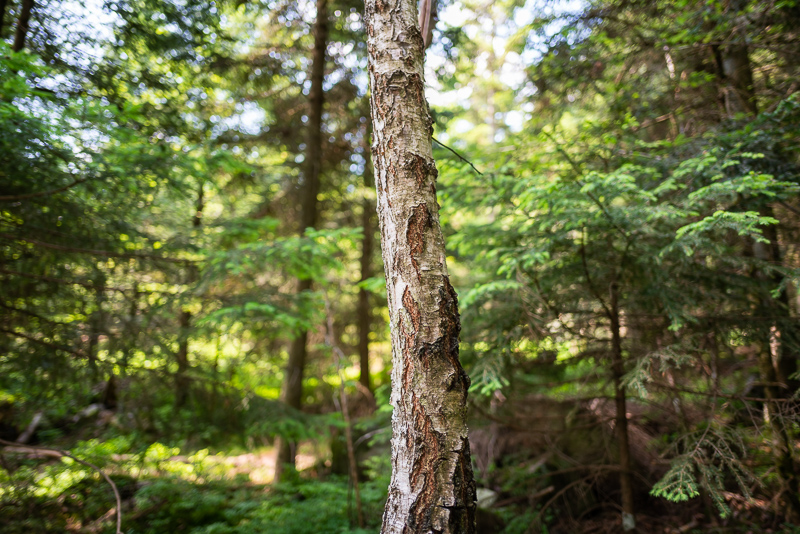
For full body portraits – or even bigger objects – at longer distances you will barely notice that the background is out of focus at all – at normal viewing distances that is:



Sunstars
Originally Cosina used 10 straight aperture blades for their M-mount lenses but some of the newer ones feature 12 straight aperture blades instead. This 21mm 1.4 doesn’t draw as pointed stars as the Voigtländer VM 50mm 1.5 II or the 21mm 3.5 Color-Skopar with their 10 aperture blades but they are still nice to look at between f/2.0 and f/16.
If you want to learn more about sunstars have a look at this article.

Chromatic aberrations
lateral
Lateral CA are on a low level and can be easily corrected with just one click in e.g. Lightroom.
longitudinal
When shooting high contrast scenes at wide apertures bokeh fringing can appear and we see an average amount of green outlining:
Purple fringing is also noticeable at f/1.4:
Not a bad performance for an f/1.4 lens, but I have seen better. For example the TTArtisan 21mm 1.5 performed a bit better here and the Sony FE 20mm 1.8G noticeably better.
Conclusion
good
|
average
|
not good
|
In terms of optical performance this Voigtländer VM 21mm 1.4 Nokton is probably the best 21mm lens you can attach to your M-mount camera. Sharpness and contrast are extremely good, only the latest wide angle lenses that also make use of a complex optical design and aspherical elements can compete with this lens. Also Voigtländer’s own VM 21mm 3.5 Color-Skopar cannot compete at any aperture. The flare resistance is also good and the lens comes with distinct sunstars typical for Cosina’s Voigtländer lenses.
There is one question you may want to ask yourself though: can you make use of the fast aperture when it comes to a 21mm lens?
For environmental portraits I prefer 28 and 35mm lenses. I also don’t really see people using M-mount cameras for astrophotography (the high vignetting doesn’t exactly help here either).
For me personally I see the main applications for a lens like this for reportage/concert photography or when using analogue cameras, where every bit of additional speed is greatly appreciated.
Considering the complex optical as well as mechanical design – and keeping in mind Leica’s 21mm 1.4 is even bigger and heavier – I shouldn’t complain too much about this lens’ dimensions and weight, but it is still a big and heavy lens. Bigger and heavier than I usually like my M-mount lenses to be.
But the fact is: this Voigtländer’s optical performance is so good that I still ended up putting it in the bag and I never regretted that when looking at the results afterwards.
buy from B&H | amazon.com | amazon.de | ebay.com | ebay.de for $899 (affiliate links)
Alternatives
M-mount
Voigtländer VM 21mm 1.8 Ultron
Actually my plan was to buy both – the older VM 21mm 1.8 Ultron and the newer VM 21mm 1.4 Nokton – and doing a proper comparison between these two lenses, especially as I find the weight and size (with shaved off hood at least) of the f/1.8 version more fitting to the M-mount cameras.
Long story short: I bought two copies of the VM 21mm 1.8 Ultron and both were too decentered to review them (let alone to pay for, keep and use personally).
From what I have seen from those two samples I have some doubts that even a really well centered sample could compete with the f/1.4 Nokton in terms of optical performance though.
If you are located in the EU and happen to have a really well centered sample that you would be willing to send me for a review please call out.
buy from B&H | amazon.com | amazon.de | ebay.com | ebay.de for $799 (affiliate links)
TTArtisan 21mm 1.5
In terms of optical performance the TTArtisan 21mm 1.5 simply cannot keep up with this Voigtländer VM 21mm 1.4. Sharpness and contrast are worse (no floating elements), stopped-down vignetting is higher, coma is stronger, flare resistance is worse and the minimum focus distance is also worse.
It is a lot cheaper though, so if you only rarely need a 21mm lens but you want a fast one this can still be a viable alternative.
buy from the manufacturer’s shop | amazon.com | ebay.com | ebay.de for $429 (affiliate links)
Leica 21mm 1.4 Summilux-M
Now if you think this Voigtländer is a heavy lens you will probably not like Leica’s version, as it adds an additional 100g. Its optical design is simpler (only 10 elements with 2 aspherical surfaces, not 13 with 4) but it also features a floating elements design – it only focuses down to 0.7 m though, so I am not sure how useful it actually is.
As usual it is hard to find reviews with an actual assessment of this Leica lens’ performance, but what I saw didn’t give me any reason to consider picking it over the Voigtländer 21mm 1.4.
buy from B&H | ebay.com for $8995 (new) or $4500 (used) (affiliate links)
E-mount
Voigtländer 21mm 1.4 Nokton E
I know some of you are tempted to get the M-mount version to be able to use it on different camera systems or even turning it into an AF lens with the help of the Techart LM-EA9 AF adapter, but the E-mount version is actually optimized for Sony’s thicker sensor filter stack, so it does perform visibly better in some areas, especially infinity corner sharpness at wider apertures and it also focuses closer.
buy from Amazon.com | Amazon.de | B&H | ebay.com (affiliate links) for $999
For E-mount several other interesting alternatives are available, most notable is the Sony FE 20mm 1.8 G, but also the Sigma 20mm 1.4 DG DN Art and the Sony FE 24mm 1.4 GM should be considered. You can find all these options discussed in our Guide to 20-28mm Wide Angle Lenses for Sony FE cameras.
Sample images


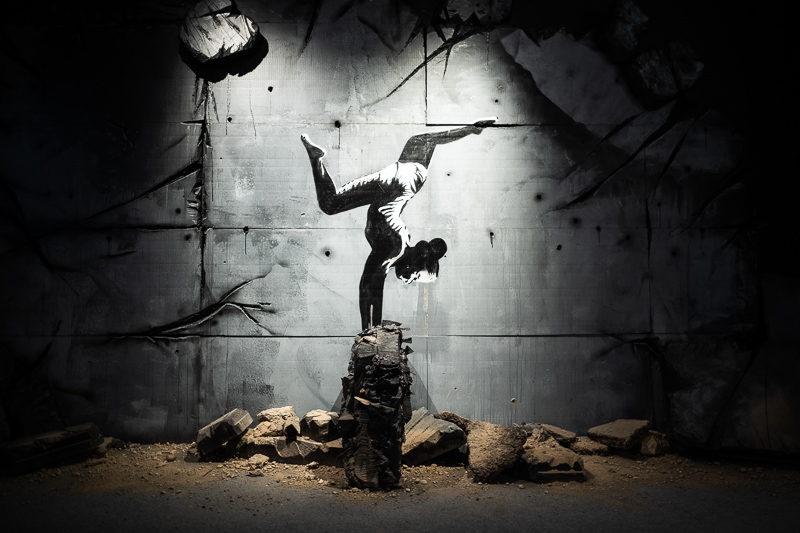
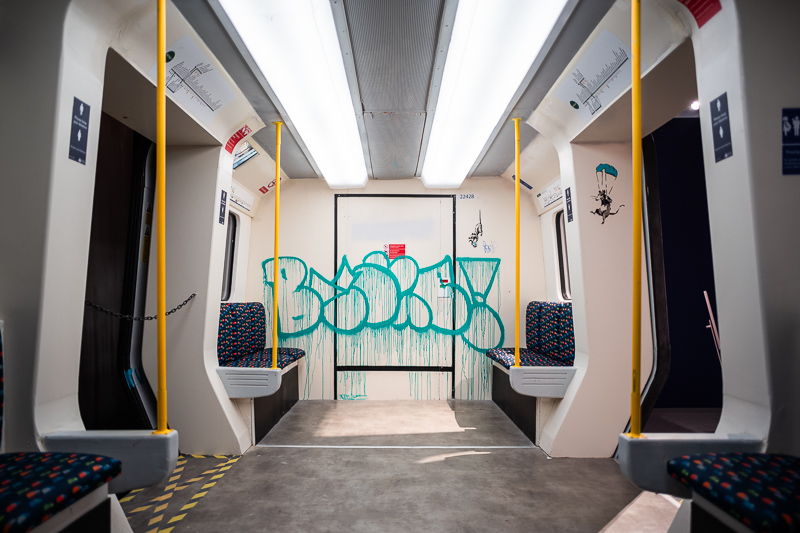








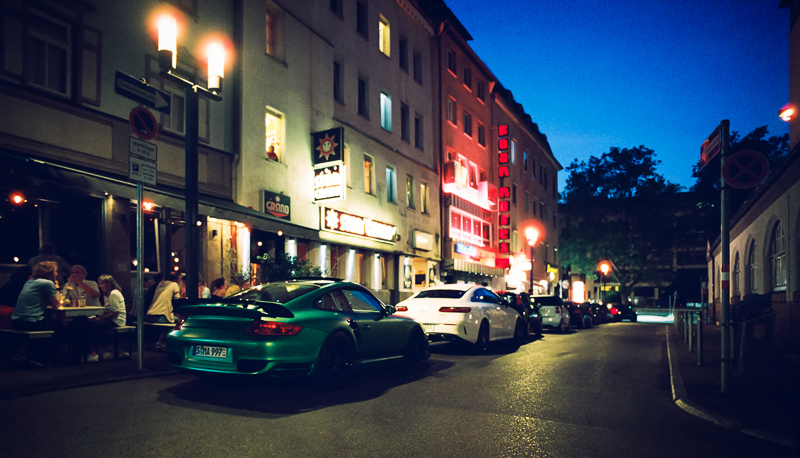






You can find most of the shots in this review in full resolution here.
Further Reading
- All Leica M-mount reviews
- Technical Knowledge
- How to take better pictures?
- Join our Discord server to get the latest news
Support Us
Did you find this article useful or just liked reading it? Treat us to a coffee!
![]()
![]()
![]() via Paypal
via Paypal
This site contains affiliate links. If you make a purchase using any of the links marked as affiliate links, I may receive a small commission at no additional cost to you. This helps support the creation of future content.
Latest posts by BastianK (see all)
- Review: SLRmagic 50mm 0.95 Hyperprime LM - July 5, 2025
- Full Resolution Pictures getting fixed - July 4, 2025
- Analogue Adventures Part 42: A wedding with Eastman Double-X 200 - July 2, 2025












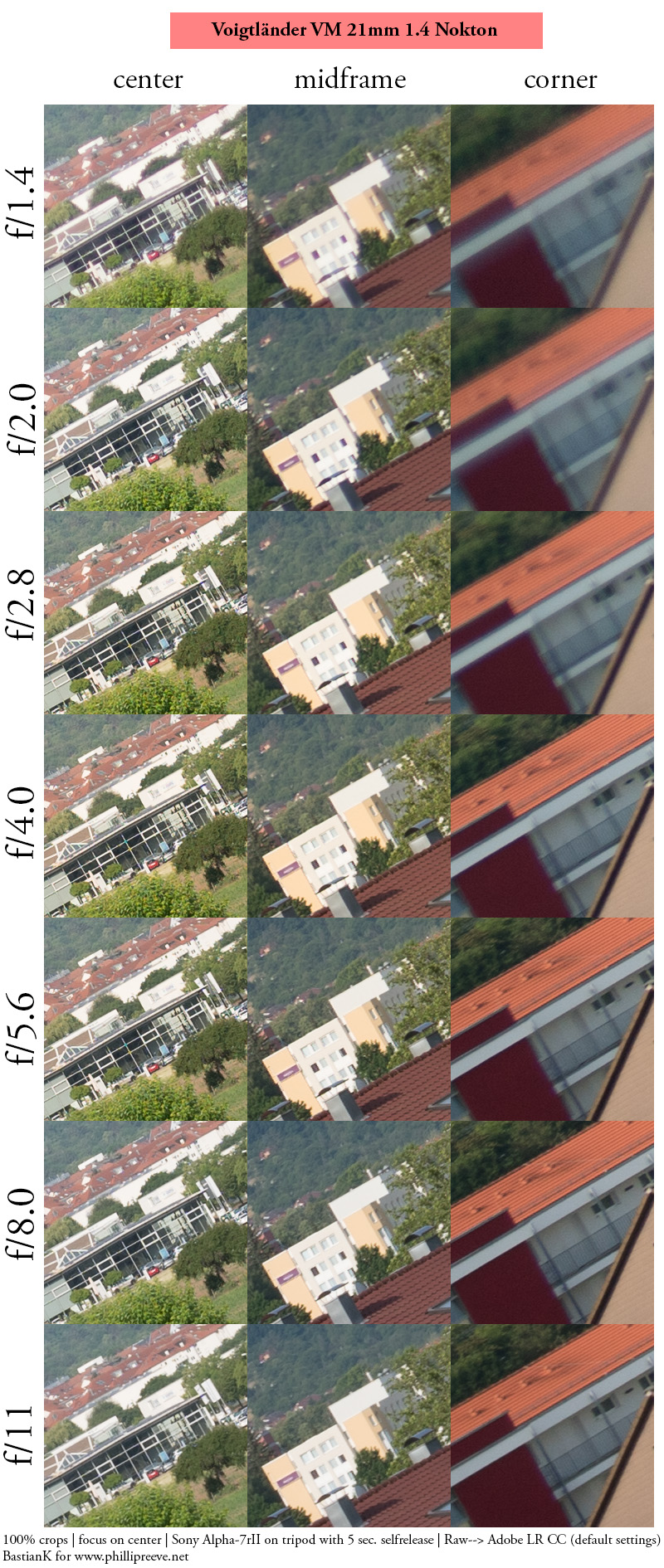
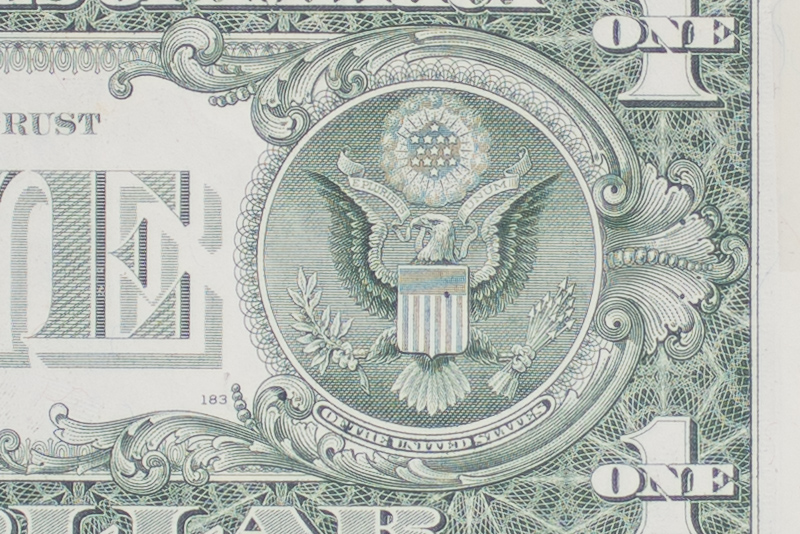





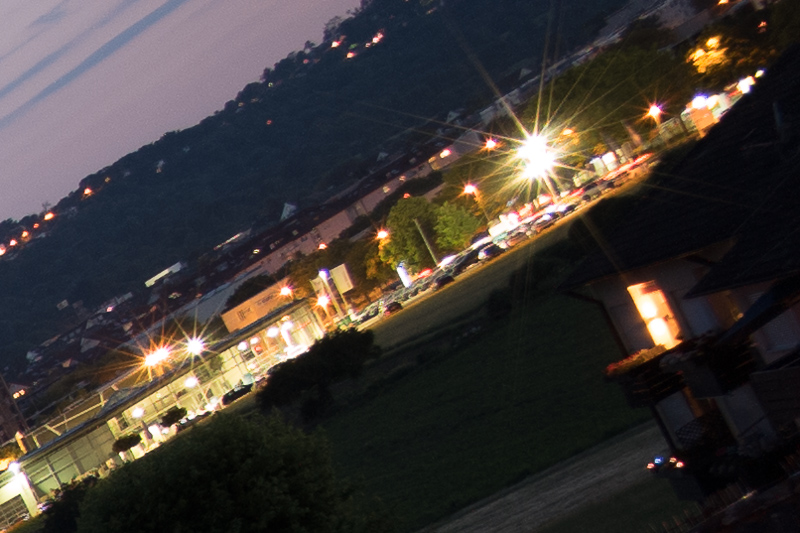

















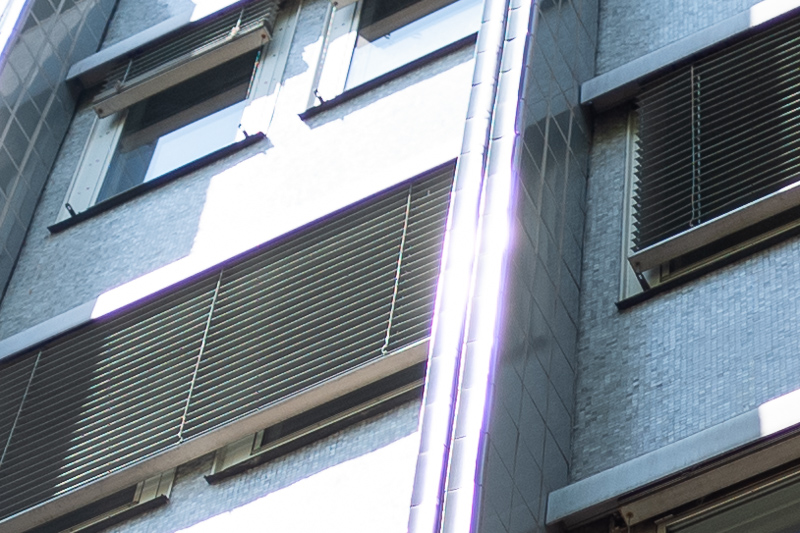
Great variety of “sample” images (calling them samples somehow feels wrong though)!
Ah, don’t worry about it 😅
That across the table portrait is brilliant looking.
Thanks!
Perfect timing!
I’ve been raving about the Summilux 24mm, but the asking price, even for a used one, is quite steep.
The 21mm Nokton is comparably huge and heavy, but significantly cheaper. Cropping in a bit, however, achieves the same framing.
If this lens existed in 2011 when I bought the 21 Lux, it would have saved me a ton of money. 🙂 But back then there was nothing else this fast for M mount. In any case, this VM obliterates the Lux in every technical imaging category I can think of: overall wide open across frame sharpness (Lux is actually pretty decent), mid zone performance (Lux has a more noticeable mid zone performance reduction), MFD, LoCA/purple fringing, coma, flare… The VM’s current price point is amazing in comparison – the Leica reliably increases in price (such is Leica’s habit across the board). IMO the Lux’s ergonomics are suboptimal – the focusing and aperture rings are too close together, too similar in feel and the focusing ring too narrow. But I still have the Lux – I do like its ‘look’ at wide apertures at near distances, but wouldn’t buy it specifically for this now. At the time, considering the M9’s relatively poor high ISO performance, I just wanted as fast an UWA as possible for available light people photography.
I may also use it on analogue M cameras a bit more in the future which have even poorer high ISO performance than the M9 🙂